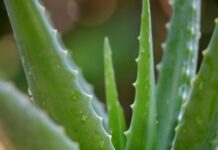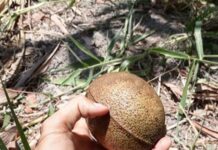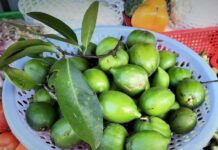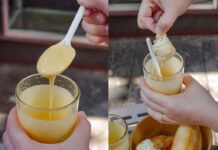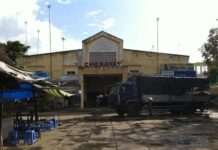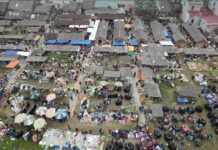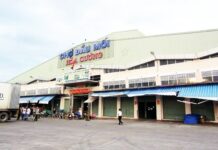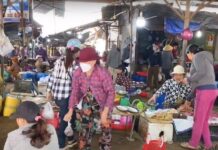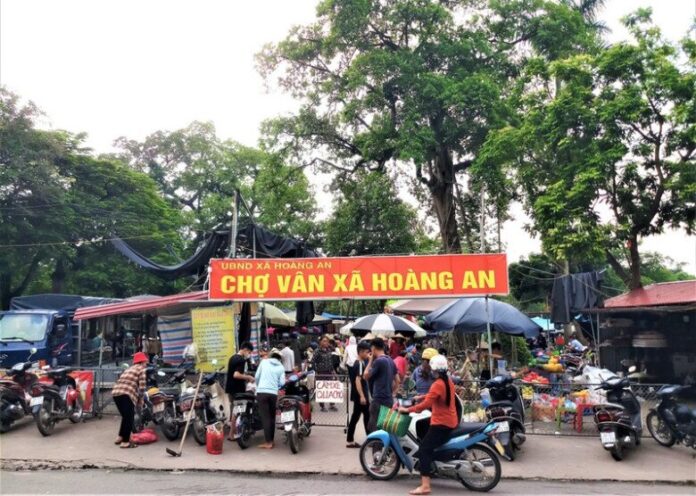The elderly villagers recount that Cho Van has existed for over a century. The market is located right in front of Dinh Van, a 12th-century architectural monument from the Le Dynasty.
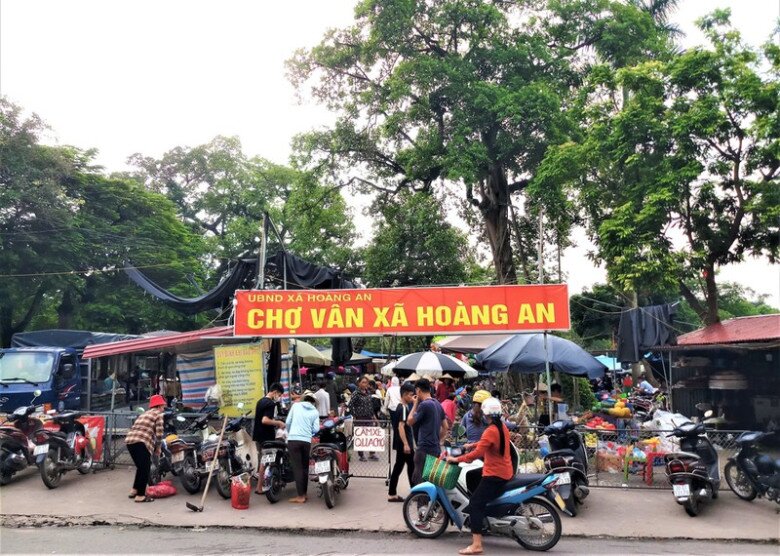
During the August Revolution of 1945, Dinh Van served as a gathering place for mass assemblies and revolutionary propaganda organized by central leaders. After the war, the temple was restored and recognized as “Safe Zone 2” of Hiep Hoa, along with other historical sites in the district.
Cho Van is a periodic market held on the 2nd, 4th, 7th, and 9th days of the lunar month. On these days, the market buzzes with activity as traders and villagers from far and wide converge to buy and sell goods. The agricultural produce on offer is abundant, ranging from rice, beans, potatoes, corn, to fresh vegetables. Among these, the region’s specialty is wild bamboo shoots and tam fruit (a type of wild plum).
During the autumn season, when black and white tam fruits are in harvest, the market becomes even livelier with bustling buyers and sellers.
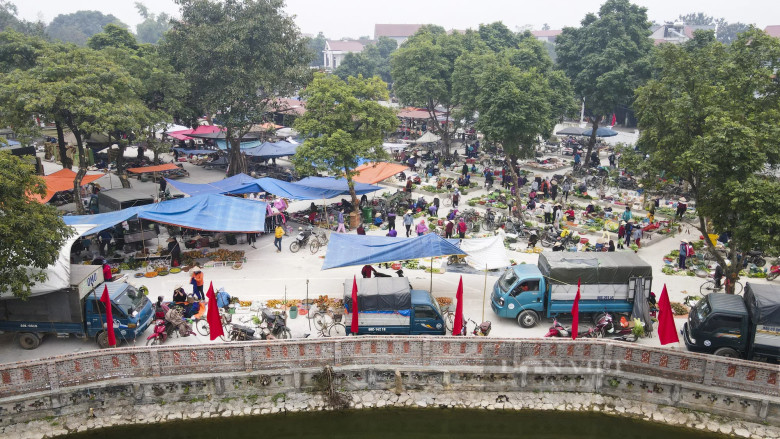
Here, elderly villagers bring a few bunches of vegetables, a few bitter melons, or a bunch of bananas harvested from their gardens. The most noticeable aspect of Cho Van is that most of the sellers are women—farmers who bring their produce from their fields or homemade processed food to sell. As a result, the vegetables are always fresh and inexpensive, attracting many city dwellers who take the opportunity to buy when they visit their hometown.
One of the distinctive products of Cho Van is “tuong nep,” a type of fermented rice with a unique flavor compared to those found elsewhere. Each grain of glutinous rice in the tuong remains intact, round, and golden, emitting a sweet and mild aroma. Ms. Pham Thi Ly, a resident of Ke Van, specializes in making and selling this tuong nep. During market days, she brings both the finished product and the fermentation starter for those who wish to make it at home.
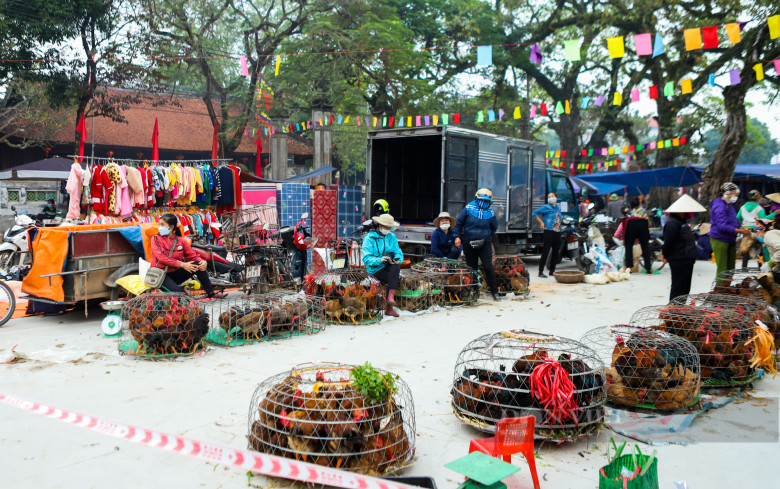
A unique feature of Cho Van is the presence of blacksmith stalls, a rare sight even in other rural markets. These stalls not only display and sell farming tools but also have forges where they repair knives, sickles, hoes, and shovels upon request. Mr. Nguyen Van Thang, a nearly 60-year-old blacksmith from Thai Son commune in Hiep Hoa district, has been attached to this trade since childhood, carrying on a family tradition spanning generations.
An intriguing aspect of Cho Van is that all visitors park their vehicles in a designated area and then walk to buy and sell goods, creating a peaceful and serene atmosphere. Thus, strolling through Cho Van becomes a delightful experience for those seeking to immerse themselves in the tranquil ambiance of rural life.
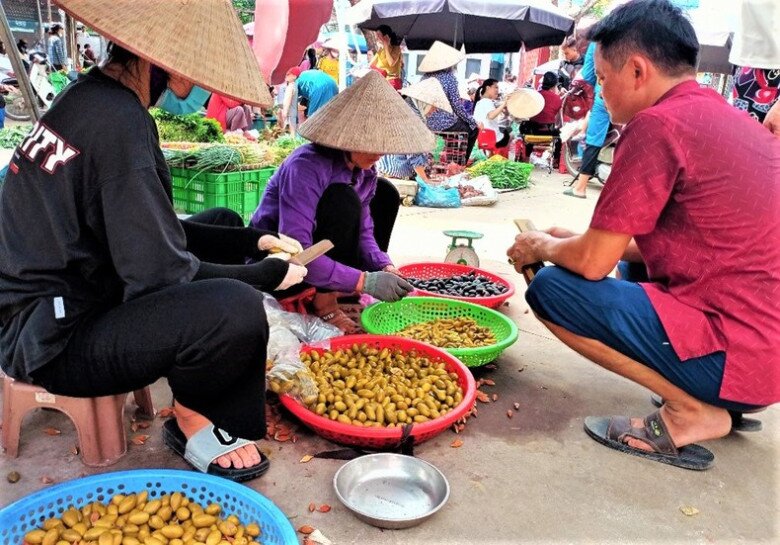
Dinh Cho Van is one of the most important relics in Hiep Hoa district. Classified as a “Safe Zone 2,” the temple was further recognized as a special national relic in 2020. This ancient temple, situated next to the traditional market, has formed a strong bond over the centuries, hence the name Dinh Cho Van, or “Temple-Market of Van.”
Nestled in a peaceful and lush rural setting, Cho Van, together with the ancient temple, presents a space imbued with historical and cultural significance. Over the years, the local government and residents have paid special attention to preserving and promoting traditional cultural values, thus safeguarding the ancient beauty of their homeland.


